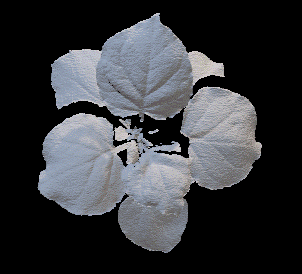
The Climate Laboratory Holt in Tromsø
The Climate Laboratory Holt in Tromsø is a core facility for controlled growth experiments with plants. It is jointly operated by the Department of Arctic and Marine Biology (AMB) at UiT The Arctic University of Norway and by the Norwegian Institute of Bioeconomy (NIBIO). Being located at 69° 39’ N, 350 km north of the Arctic circle, it is the northernmost phytotron in the world and one of three such facilities in the country. The main research area in the lab is mostly focused on the effect of environmental factors on growth and quality of plants, and adaptation of plants to different growth conditions and climate change. The importance of the specific Arctic light and temperature conditions is one of the key interests. The Climate Laboratory mainly consists of a phytotron with experimental units, a molecular lab, and two dark rooms dedicated to state-of-the art image-based phenotyping equipment. It is ideally situated on the west side of Tromsø island, right next to the NIBIO Tromsø research station and a few kilometres away from the main UiT campus, making it an holistic, human-sized environment for plant research at the Arctic gateway.
The Climate Laboratory contains 6 daylight rooms and 4 dark chambers including a S3 (GMO) certificated room for experimental use. The temperature can be adjusted with ± 0.5˚C accuracy from 6˚C to 27˚C in the daylight rooms and from 0.5˚C to 27˚C in the dark chambers, with day/night shifts as needed. Air humidity, light intensity, quality, and photoperiod can be further controlled.


The Climate Laboratory hosts a 3D multi- and 2D hyper-spectral imaging platform, augmented with thermal analysis capabilities, tailored for plant phenotyping. The equipment was mostly acquired via the project ABSORB – WP4: “Capacity development for imaging and characterization of Arctic biomass”, as strategic investment.
The PlantEye F600 (Phenospex) is a multispectral 3D scanner designed for plants. A laser scanner paired with 4 colour diodes enables fast and non-destructive measurement of plant parameters such as digital biomass, height, leaf area, tissue colour, and health and stress indices. This relatively small-sized (in theory portable) scanner allows for taking 3D images of plants in any environmental conditions. The PlantEye F600 is fast and user-friendly, allowing for a relatively high throughput analysis of plant material. The HortControl software is used to acquire and pre-process the data, and monitor ongoing experiments.
Hyperspectral imaging combines imaging and spectroscopy, resulting in the assignment of thorough spectral data to each pixel in the image. It is used to localize, identify, and quantify chemicals in various materials, including living tissues. This technology is data-rich, enabling for instance the detection of early onset diseases, nutrient deficiencies, and yield prediction. In our lab, hyperspectral imaging comprises two main units, each located in a dedicated dark room. First, Specim FX10e (400-1000 nm) and FX17e (900-1700 nm) push broom cameras come with a sliding table that enables small- to medium-sized plants to be moved for complete imaging. Second, the IMEC VNIR (450-900 nm) serves as a more portable system, allowing for the acquisition of more in-depth, magnified images with spectral information when paired with appropriate attachments.
Finally, the integration of a thermal camera (Seek ShotPro) allows for a comprehensive understanding of plant health and physiological responses to environmental conditions.

The Climate Laboratory has an additional working space offering basic equipment for analytical and molecular biological work, with a stunning view over the mountains of the neighbouring Kvaløya island.

Additional greenhouse space for growing and maintaining stock and research plants, working areas for sample preparation, controlled freezers, and cold rooms for plant material storage are available.
The users of the Climate Laboratory facilities are researchers, students, and (inter)national project collaborators associated with UiT and NIBIO. The applications for research activities at the Climate Laboratory are submitted in December – January for the upcoming year.
Contact information
Laura Jaakola
Wojciech Leoniuk
Thomas Bawin
Address:
Holtvegen 62
9016 Tromsø
Norway
Page editor: Jaakola, Laura